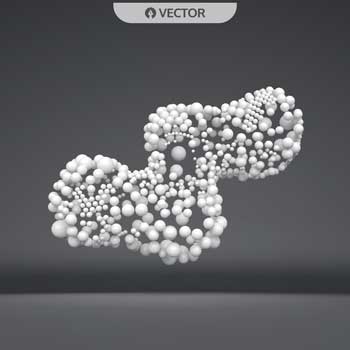| Posted: Sep 18, 2018 | |
Clarified why some nanoparticles pass through nanopores whereas other smaller ones do not(Nanowerk News) In a study recently published by the journal Polymer, the UPV/EHU’s Polymers & Soft Matter group has modelled and formulated a law that establishes the link between the size and elasticity of various soft synthetic nanoparticles, which means that large nanoparticles are able to pass through pores at least ten times smaller than their size while other smaller ones do not do so. This could lead to various applications for characterising nanoparticles. |
|
| The UPV/EHU’s Polymers and Soft Matter group, which brings together researchers from the Materials Physics Centre (CSIC-UPV/EHU), the Department of Materials Physics, and the Donostia International Physics Center (DIPC), has recently published a study in the journal Polymer ("Ultrafiltration of single-chain polymer nanoparticles through nanopores and nanoslits"). In it they explored the translocation of soft synthetic nanoparticles through nanopores and nanoslits that have a diameter or width smaller or narrower than their own size. | |
 |
|
| Nanoparticles with great elasticity have the capacity to change their shape until they are able to pass through pores even 10 times smaller than their own size. | |
| “One of the fields of research of our group is the synthesis of polymer chains and their folding until nanoparticles are formed, by attempting to match that folding with that which takes place in proteins in nature,” explained Josetxo Pomposo, an Ikerbasque lecturer at the UPV/EHU. “One potential application of these nanoparticles could be the delivery of drugs that would be transported in the gaps that form when the chains fold and which would act as pockets; the drugs would be released once the nanoparticle has reached the area to be treated.” | |
| But if the nanoparticles are to be able to perform this function, they have to be capable of passing through the membranes of the target cells, “and that capability of passing through the pores or slits in the membranes, which are smaller than the nanoparticles themselves, is determined by the degree of folding and elasticity they have,” specified the researcher. | |
| In this study the research group worked on a nanoparticle model on a theoretical level to be able to anticipate the behaviour the nanoparticles would display when it comes to passing through a nanopore or nanoslit. As Dr Pomposo explained, “what happens is that there are some pretty large nanoparticles that, owing to their high degree of elasticity, are capable of passing through small pores, and other, smaller, more rigid ones which cannot, however, pass through them”. | |
| The work has resulted in a series of scaling laws that link the smallest diameter that a nanoparticle will be able to pass through bearing in mind its size and degree of elasticity, or the critical flow rate needed for the translocation of the nanoparticles through nanopores, among other things, to take place. “What it does is provide the theoretical basis for what was being observed in various studies of this type,” he stressed. | |
| This information could even lead to developing characterisation techniques that currently do not exist: the determination of the elasticity of soft nanoparticles by making them pass through a series of nanopores or the separation of the particles on the basis of their elasticity or degree of internal cohesion. Dr Pomposo emphasised the degree of resolution being achieved with new characterisation techniques since “they are providing information on individual nanoparticles of nanometric sizes”. |
| Source: University of the Basque Country | |
|
Subscribe to a free copy of one of our daily Nanowerk Newsletter Email Digests with a compilation of all of the day's news. |
